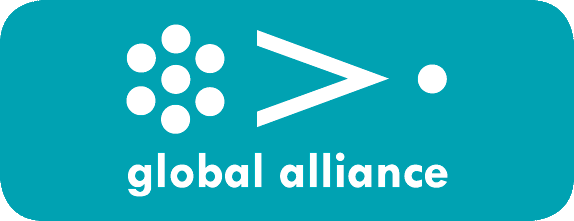Comission on Public Relations Education
The Global Alliance is a proud member of the Commission on Public Relations Education. The Commission on Public Relations Education is the authoritative voice on public relations education.
Since its founding in 1973 by the Public Relations Division of the Association for Education in Journalism, joined by co-sponsor the Public Relations Society of America, the Commission has provided recommendations on public relations education for universities and professional associations across the globe. These recommendations have been adopted and adapted to positively impact undergraduate and graduate public relations education. The Commission’s work also produces essential data and recommendations informed by research and honed by experienced practitioners and educators, and used by educators, educational administrators, students, practitioners and industry leaders. The Commission also strives to offer a forum for advancing public relations education with a global perspective.
The Commission’s work is global. It includes members from twenty organizations. The focus of our work is on raising standards by periodically issuing guidance for educators, administrators and students on the essential components of a public relations degree or major. As the only body involving academics and practitioners, the reports from the Commission are adopted broadly in all continents and serve as a basis for programs wanting to be accredited.
After three years of research in the U.S. and abroad, the Commission on Public Relations Education released in 2018 a major report of findings and recommendations with clear, consistent and compelling direction for public relations students, those who teach them and those who hire them. (Download at www.CommissionPRed.org)
The report’s title, “Fast Forward: Foundations and Future State, Educators and Practitioners,” reflects the research-based recommendations from 60 Commission members who conducted research, formulated observations and developed more than 80 recommendations to enhance public relations education. Key take-aways:
Speed is essential. There is universal agreement among practitioners and educators that the ability for educational efforts to move, be nimble and adapted, is critical. Public relations education mirrors the industry, which is in a time of incredibly intense change. Observed at the 2015 Commission Summit: “Half of what we do now didn’t exist ten years ago.”
Writing, for all platforms, is the core competency that practitioners and educators agree must be improved.
Ethics, ethics, ethics – always the critical tenet of our profession is now more than ever a commitment that begins in the classroom, with a required ethics course added to the existing five CPRE-recommended required courses (principles, research, writing, internships, and campaigns).
Diversity is essential to a profession that helps organizations relate to their worlds, and it must begin on campus and in the classroom, not just as a business strategy, but because it is the right thing to do.
Core qualifications, identified by practitioners who are hiring public relations undergraduates, are a liberal arts education, and knowledge and skills learned from courses that cover topics including strategic communications, measurement and evaluation, social media, publicity and media relations, and content creation.
Practitioners and educators remain committed to the foundations of public relations including research, theory, and required paid internships for real time learning. There is also agreement that a global perspective must be acquired by undergraduates, and that outside-the-classroom experience in campus activities, student-run media and public relations agencies and The Public Relations Student Society of America (PRSSA) also develop needed knowledge and skills.
Simultaneously, change is everywhere and is critical. Examples: new technology is both used and taught in the classroom, online programs must produce the same level of learning as in the classroom, and an evolving faculty model is emerging, with Ph.D. educators, professors of practice and adjunct faculty who all need to be prepared to teach effectively and to have some level of professional experience.
And the critical success factor to achieve the Report’s recommendations is ongoing dialogue and partnership among practitioners and educators so that industry needs can be translated into curricula and experiential learning, and educators can receive the support necessary for their work and for their students’ development. Educators and practitioners, industry and the academy must work together.
